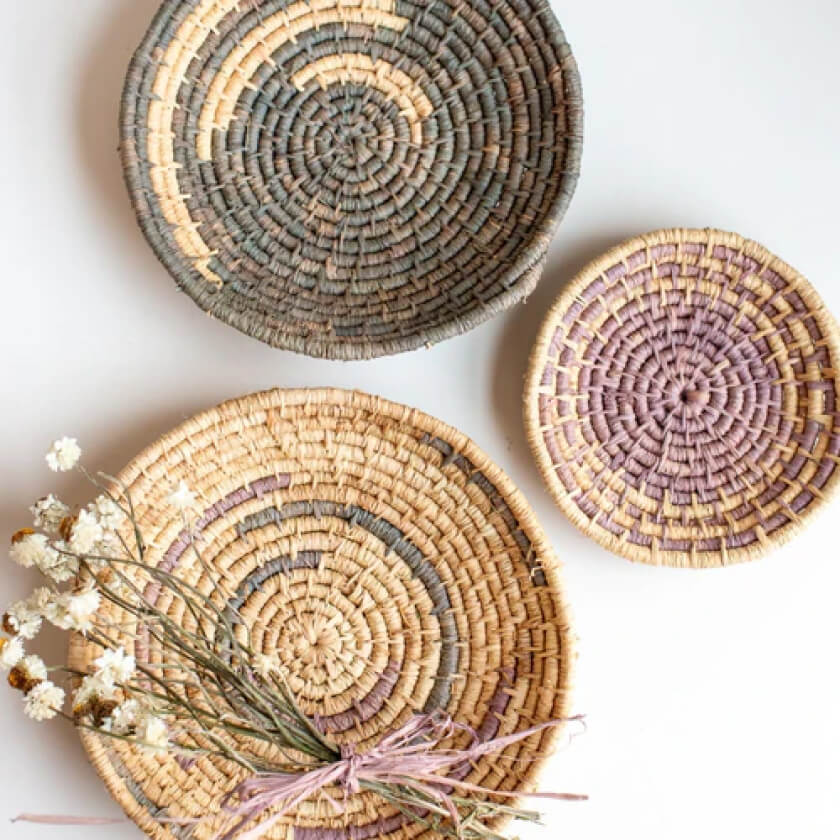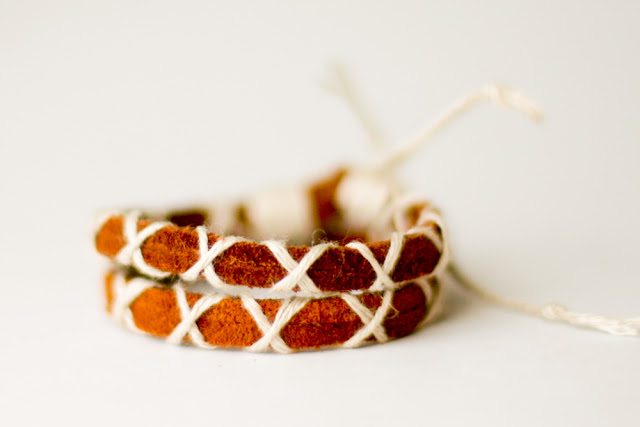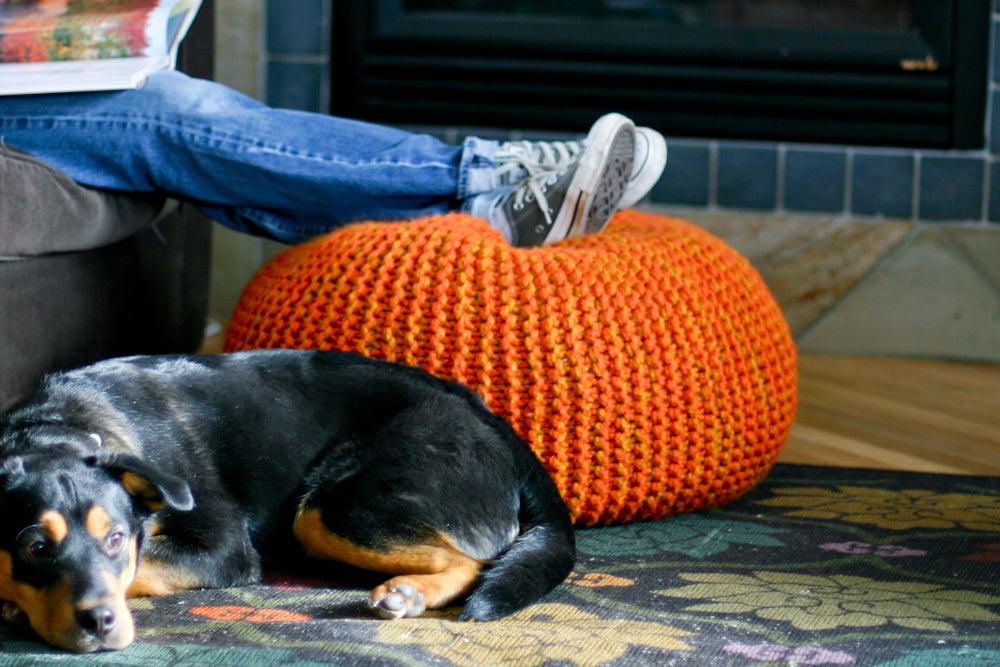As part of the Sew, You’ve Always Wanted To Quilt series, I am excited to introduce my second guest poster on flax & twine, Annik Miller. Annik and I grew up in Minnesota together and attended the same school. We just recently reconnected and discovered our joint love for making. She is a beautiful and talented sewer, quilter and mother who blogs her sewing and quilting adventures over at Mini Mushrooms. I feel privileged to know and learn from her. I am honored to have her posting on my blog.
A huge thanks to Anne for inviting me to do a guest post on Flax & Twine. I’m so excited to be a contributor to the quilting series!
In this tutorial, I’m going to show you how to make a fresh and modern little pillow-shaped pin cushion while covering the basics of piecing a quilt block.
Materials
fabric scraps in 3 different colors or prints
rotary cutter and mat
clear acrylic ruler
pins
point turner (optional)
sewing needle
measuring tape (optional)
2 small buttons with the same number of holes
thread
pin cushion filling
A note about the filling – ground walnut hulls (sold at pet stores as lizard bedding) make excellent pin cushion filling. My second favorite is wool batting. Check Etsy if you need a source. My third choice is polyester fiberfill which is readily available from sewing and crafting stores.
A note about the fabrics -This project uses very small amounts of fabric so it’s a great opportunity to use up some scraps. I’m using solids because I love their simplicity, but small scale prints would look great, too.
Cutting Instructions
Use your rotary cutter and ruler to make the following cuts:
-One 1 3/4” square from the center square fabric.
-Two 1” high by 2” long strips and two 1” high by 3” long strips from the middle square fabric.
-Two 1 ¼” high by 3” long strips and two 1 ¼” high by 4” long strips from the outer square fabric. Cut a 4 ¼” square from the same fabric for the pin cushion back.
Construct the Pin Cushion Block
Use the standard ¼” quilting seam allowance for this entire project.
I highly recommend using a piecing foot if you have one. If you’ve never used it before, make a test seam to check that it’s actually ¼”. You may need to move your needle a position or two to the right or left to get an exact ¼” seam. If you don’t have a piecing foot, Measure ¼” from the needle and place a piece of blue painter’s tape on the bed of your sewing machine to use as a visual guide.
This diagram shows the order in which we’ll sew the pieces, starting at the center of the block.
Sew the two shorter middle square strips to the opposite sides of the center square, right sides facing. These are pieces 1 and 2 on the diagram. Notice that I’ve had you cut the 1” x 2” strips slightly longer than necessary. Allow a 1/8” overhang on each end.
Press the seams flat just as you’ve sewn them. This is called setting the seam. Next, press the seams open. Quilters typically press seams over towards the darker fabric, but we’ll press all of our seams open.
Using your acrylic ruler and rotary cutter to trim off the excess fabric from the middle square strips. The piece should now measure approximately 1 ¾” wide by 2 ¾” long. We’re squaring up the block as we go.
Working one side at a time, pin one of the longer middle square strips to the center square, right sides facing. The in-progress block is on top and the narrow strip on the bottom. Place pins through the pressed open seams so they don’t accidentally fold over as you sew.
Remove the pins as you sew, before you get to the needle.
Repeat this process on the other side of the block. When both sides are sewn, set the seams then press them open. Once again, use your ruler and rotary cutter again to trim off the excess fabric.
Use the same method as above to sew the outer square pieces on to the pin cushion block. Start with the shorter pieces. Pin them to the edges with the seams.
Press, then trim the excess fabric then repeat with the longer strips on the other two sides.
Press the seams open, then flip the block over and press it again on the top side of the block.
Make the Pin Cushion Pillow
Put the block piece and the pin cushion bottom piece together, right sides facing, the block on top. Pin the seams.
Sew a ¼” seam around the perimeter of the pinned blocks, leaving an opening about 1 ½” to 2” long along one of the edges with no piecing seams. Reinforce the stitches on both ends so they don’t tear out as you fill the pin cushion.
Snip the threads then trim off all four corners of the cushion close to the stitching.
Turn the pin cushion right side out. Use a pair of tweezers or a point turner to help you turn it right side out if the hole is too small to do so with your fingers.
Use a pin or a point turner to turn the corners out completely.
Press the pin cushion on the top and bottom. Press the opening, too, Make sure the seam allowance is folded under and is perfectly aligned with the sewn edges.
Fill and Finish
If you’re using wool or poly fiberfill, use your point turner or a chopstick or similar tool to push the filling into the four corners. Fill the pin cushion to the point where you think it will overflow.
If you’re using ground walnut hull to fill the pin cushion, a funnel (or one made with a sheet of paper and some tape) will make the process much easier. Fill the pin cushion almost but not quite full.
Find your hand sewing needle and matching thread. Knot the strands and trim the threads so that only about ¼” remain.
Use a simple whip stitch to sew the pin cushion closed or use a ladder stitch for a nearly invisible finish.
To do a ladder stitch, bring the needle in to the left side of the opening from the inside, as close to machine stitching as possible. Bring the thread through the fabric then across to the right side and slide it into the pressed fold.
Make a very small stitch through the pressed fold. Pull the thread through until it’s taught. Go directly across to the left side and repeat the same tiny stitch. Continue in this manner until you reach the end of the opening.
Knot the thread, then slip the needle back into the pin cushion and out through corner. Snip the threads. This is called burying the threads.
Time to sew in the center buttons. Use a measuring tape to find the center of the pin cushion or make an educated guess. Mark the center of the center square with a pencil.
Thread a needle with a long strand of thread that coordinates with the buttons.
Bring the needle in through the center mark leaving a 2” tail. Knot the thread through the fabric once or twice.
Snip the 2” thread tail so that it’s about ¼” long. It will be hidden by the button.
String the thread through the button hole and start sewing back to front over and over again until the button holes look full.
When the buttons hold the tuft on their own, knot the thread. Bring the needle to the front of the pin cushion, leaving some slacked thread in the back. Bring the needle back through and make a double or triple knot through the loop. Pull the knot tight. Bring the thread back through to the front and trim close to the button.
Enjoy your new pin cushion!
Many, many thanks, Annik. If you want to learn how to make a basic baby quilt from scratch, under Annik’s thorough tutelage and via easy and clear photo tutorials, check out this series that Annik has been doing. What an amazing way to step in to quilting. For more exciting beginner quilting posts to come, keep checking the Sew, You’ve Always Wanted to Quilt gallery here or by clicking the button below:































Leave a comment
This site is protected by reCAPTCHA and the Google Privacy Policy and Terms of Service apply.